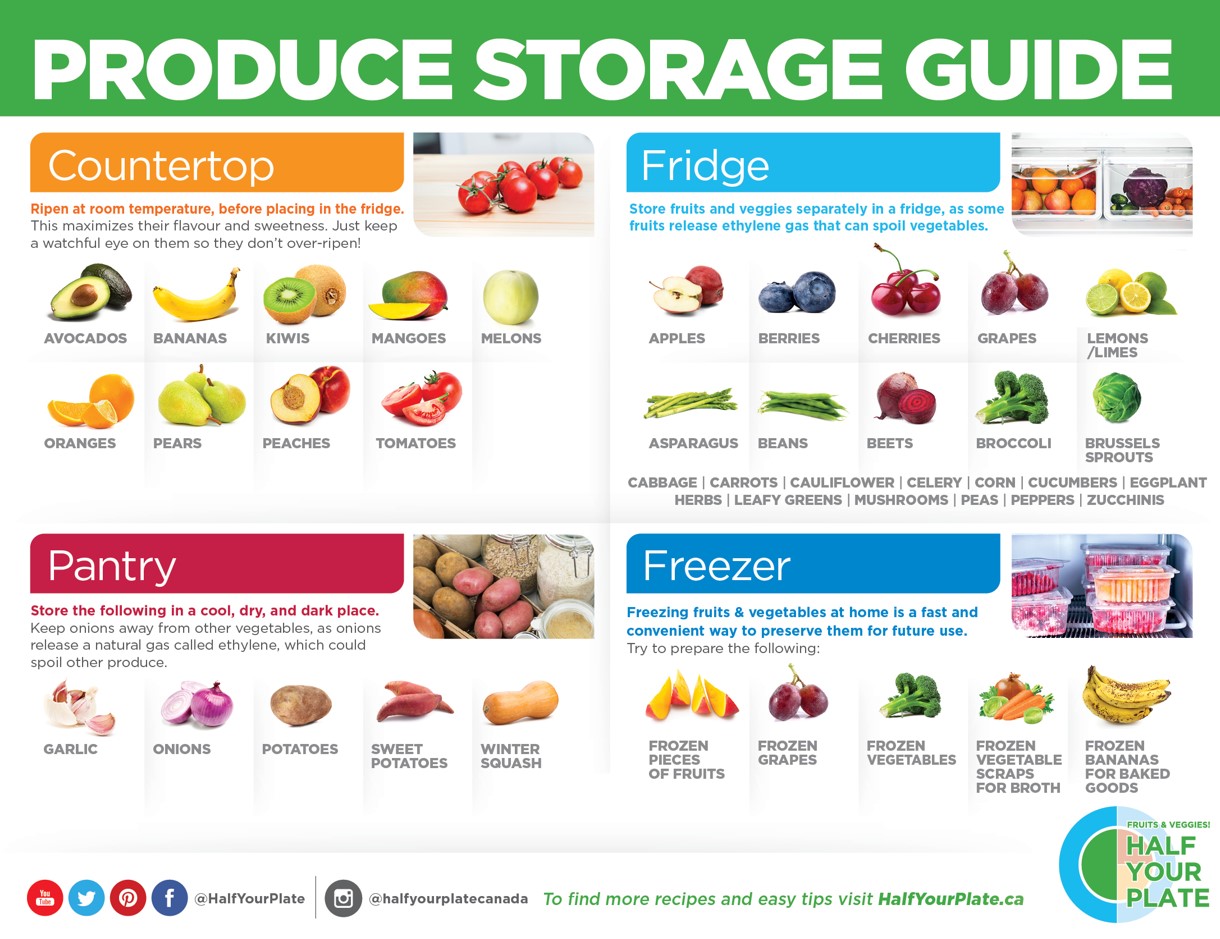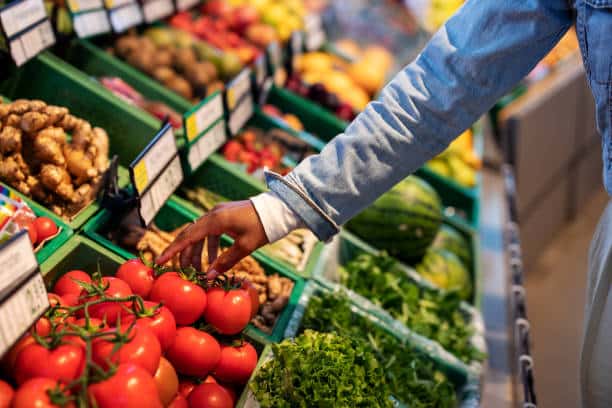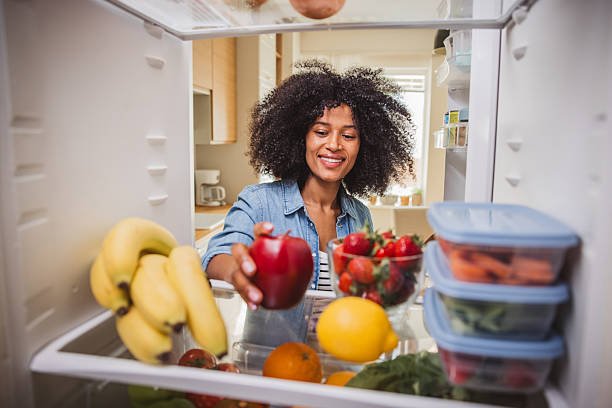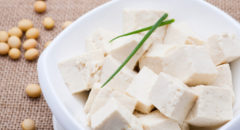
You’ve probably heard it before: “Fresh is best!” That doesn’t mean it’s easy to maintain fresh produce once you’ve bought it, though. If not stored properly, fresh fruits and vegetables can spoil quickly. It can make buying them less appealing if you have to keep dumping them every week or so. The good news is that there are a few easy ways to keep everything you buy fresh longer, so you have a chance to eat it.
5 Ways to Keep Your Produce Fresh
1. Start With a Fresh Fridge
One of your best tools for keeping your produce fresh is starting with a clean fridge. While moisture, air, and exposure to light can encourage the spoilage of certain foods, the presence of microorganisms is also a significant threat. If your fridge is teeming with bacteria, mold, or yeast, the odds of your produce spoiling will increase significantly.
2. Buy as Fresh as Possible
It’s important to consider the freshness of your produce from the beginning. The freshest you can get is what comes from your personal garden. The next is produce that’s grown within your community or close by. Third is produce that comes from a neighboring state or within a few hours. Last, of course, is produce that’s imported from other countries. While some fruits and vegetables are hardier than others, you’re likely to get a longer shelf life from those that are freshest. Knowing which ones are local can also help you make decisions about what you plan to store and what you’re going to eat immediately.
RELATED: Is This Still Good? When to Toss Food in the Fridge
3. Manage Your Fridge’s Airflow
Packing your fridge too tightly can lead to the buildup of condensation. This condensation provides enough moisture to promote the growth of microorganisms that can break down your produce. It’s a good idea to make sure your fruits and vegetables have enough space to breathe while in storage. You can also use breathable bags and aerated containers for storage.

4. Choose the Right Temperature
While many fruits and vegetables get stored in the fridge, that doesn’t mean it’s the ideal temperature for everything. For example, citrus fruits can be stored at room temperature for up to a week before moving them to the refrigerator. Underripe pears, peaches, and bananas can be stored at room temperature until they ripen. When it comes to potatoes, squash, onions, and garlic, a cool, dark place does the trick. On the other hand, berries and leafy greens should be stored in the fridge as soon as you bring them home. The same is true for uncut heads of cabbage, broccoli, and cauliflower. Tomatoes are interesting because experts suggest storing them at room temperature, even though they won’t last as long. That’s because they feel tomatoes lose much of their characteristic flavor when kept in the fridge.
5. Pair Produce Well
Not all types of produce store well together, and that’s because of one naturally occurring chemical – ethylene. As fruits like bananas ripen, they produce ethylene gas, which can then cause other fruits and vegetables that are sensitive to the gas to ripen and spoil quickly. Your best bet is to separate them from each other. Fruits and vegetables that produce high amounts of ethylene include bananas, tomatoes, peppers, pears, avocados, cantaloupes, and apples. Mangoes, asparagus, peaches, onions, eggplants, grapes, and cucumbers are sensitive to ethylene and shouldn’t be stored next to any fruits and vegetables that produce a lot of it.

Why It’s Important to Manage Fresh Food
Throwing out produce can start to impact your wallet fairly quickly if you do it a lot. Sometimes, fresh food can be more expensive than the processed alternatives, so your budget can take a hit if you keep buying fresh produce to replace what you’ve thrown out. However, food waste can impact you on more than a personal level.
According to the US Department of Agriculture (USDA), food waste accounts for up to 40 percent of the food supply. While this figure includes everything from food that’s lost during harvesting to what’s disposed of by retailers and restaurants, it also accounts for consumers’ habits. To put this in perspective, this means that millions of pounds of food that could be otherwise utilized are being tossed out each year.
Of course, you may be wondering how the wilted head of lettuce you threw out recently could make a difference. Well, when it comes to food waste, every little bit matters. A 2021 report from the US Environmental Protection Agency (EPA) estimated that food waste contributed to about 170 million metric tons of carbon dioxide equivalent to the atmosphere annually. To put that in perspective, that would be the same as the annual carbon dioxide emissions of 42 coal-fired power plants.
To make things worse, that number doesn’t account for what’s rotting in landfills. In the same report, food waste was shown to be the most common material that was dumped in landfills or incinerated. When food ends up in landfills, it generates methane, another greenhouse gas that harms the environment and influences climate change.
To combat the environmental effects of food waste, the USDA and EPA recommend implementing measures that would prevent waste as well as find alternative uses for food. Apart from using food responsibly at home, the organizations suggest creating compost. This can be especially helpful if there’s a community garden.

How to Use Produce That’s About to Spoil
As mentioned previously, your best bet to combat food waste is to drastically reduce how much food you throw out in the first place. When shopping, only buy the amount you’re going to need. If you have vegetables that are about to go bad, consider using them in soups, stews, sauces, or stir-fries. You can also dehydrate or freeze certain vegetables. Vegetables like cucumbers, asparagus, jalapenos, carrots, beets, cauliflowers, okra, onions, green beans, and radishes are great for pickles.
For those who have a lot of fruit lying around, baking can take care of quite a bit. If you have a significant surplus, jams can take a lot of it off your hands. It’s usually best to use fruits that have a high pectin content to make a jam, unless you’re prepared to add store-bought pectin to the mix. Pectin is what helps jams thicken naturally when heated.
Some of the fruits that can be used to make jam include apples, plums, quinces, currants, strawberries, mangoes, pears, figs, oranges, lemons, pineapples, and tangerines. Depending on the fruit, you may also need to add a little acid to balance its sweetness. There are usually a lot of recipes available online that can help you, though.
There’s no doubt that fresh fruits and vegetables are good for you. If you don’t take the measures to keep them fresh, though, you might be throwing out more than you eat. Even if you try to store them properly, you may still end up with some produce going off. In this case, you should try to use what you can and consider composting to avoid adding food waste to the landfill.









